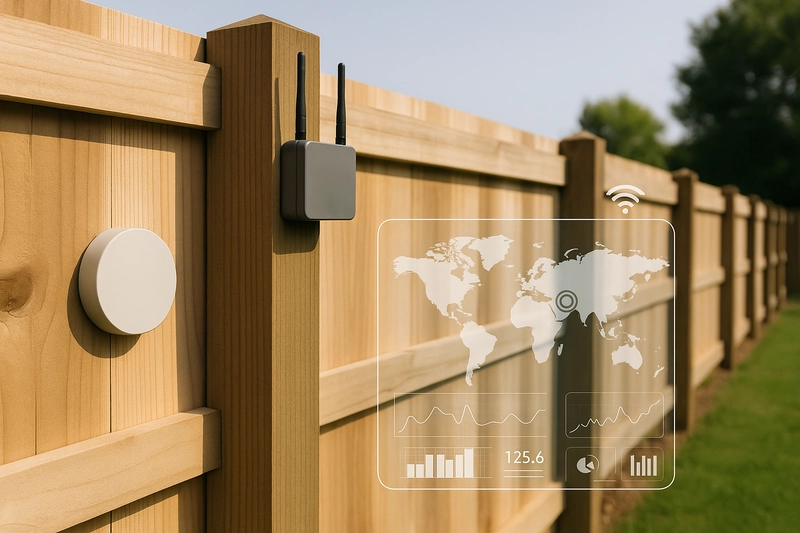Step-by-Step Guide: Building a Smart Fence Cost Estimator Using Node.js
As technology continues to evolve, the fencing industry is embracing IoT-powered tools and smart applications to improve cost estimation and enhance customer experience. Whether you’re a developer building a solution for homeowners, businesses, or fence contractors chicago, creating a smart fence cost estimator can significantly streamline project planning.
In this guide, we’ll walk through how to build a Node.js-based web application that integrates IoT data, material pricing, and labor cost analytics to deliver accurate, real-time estimates.
1. Why Build a Smart Fence Cost Estimator
Traditional fence installation quotes rely on manual calculations, which often lack accuracy and efficiency. By leveraging Node.js and IoT-driven solutions, your estimator can:
- Collect real-time property measurements using IoT sensors or satellite data.
- Factor in material costs from external APIs.
- Calculate labor pricing based on region and project complexity.
- Provide homeowners with interactive visualizations and downloadable reports.
This combination of automation and IoT integration improves decision-making for both customers and contractors.
2. Setting Up Your Node.js Environment
Before diving into development, make sure you have these prerequisites installed:
Install Node.js
Initialize your project
mkdir smart-fence-estimator
cd smart-fence-estimator
npm init -y
Install dependencies
npm install express axios dotenv body-parser cors
Key dependencies explained:
- Express.js → to create APIs and manage routes.
- Axios → to fetch data from IoT devices or third-party APIs.
- Dotenv → for managing environment variables like API keys.
- Body-parser & CORS → to handle requests securely and efficiently.
3. Creating the Core Estimator Logic
Your smart estimator needs to calculate fencing costs based on dimensions, material, labor, and IoT inputs. Here’s a simplified example:
// server.js
const express = require('express');
const axios = require('axios');
require('dotenv').config();
const app = express();
app.use(express.json());
// Example pricing data from a materials API
const MATERIAL_COSTS_API = process.env.MATERIAL_API;
app.post('/estimate', async (req, res) => {
const { length, height, material, zipCode } = req.body;
try {
// Fetch real-time material pricing
const materialResponse = await axios.get(`${MATERIAL_COSTS_API}?type=${material}`);
const materialCost = materialResponse.data.price;
// Sample labor calculation based on region
const laborRate = zipCode.startsWith('60') ? 25 : 30; // Example: Chicago vs. others
// Calculate total cost
const totalCost = (length * height * materialCost) + (length * laborRate);
res.json({ materialCost, laborRate, totalCost });
} catch (error) {
res.status(500).json({ error: 'Error fetching cost data' });
}
});
app.listen(3000, () => console.log('Smart Fence Estimator running on port 3000'));
How this works:
- Receives property dimensions and material type.
- Fetches real-time prices via an external API.
- Calculates labor costs dynamically based on zip codes.
- Returns a detailed cost estimate.
4. Integrating IoT Data for Accuracy
For projects that involve smart devices:
- Use IoT sensors to measure property boundaries automatically.
- Fetch terrain and slope data to adjust material needs.
- Integrate with weather APIs to recommend materials that withstand local conditions.
IoT integration ensures hyper-accurate calculations and helps homeowners choose the right materials.
5. Adding a Front-End for Better UX
To make the estimator user-friendly, integrate a simple front-end using React or Next.js:
- Create input fields for dimensions, material type, and location.
- Display real-time cost updates dynamically.
- Offer downloadable PDF reports with the estimated cost breakdown.
6. Benefits for Developers and Contractors
Developers can leverage this system to offer scalable APIs for fencing companies, while contractors can use it to:
- Generate instant, precise quotes.
- Improve customer trust through transparent pricing.
- Save time by automating manual calculations.
For homeowners in Illinois, collaborating with experienced fence contractors chicago combined with a smart estimator ensures reliable installations and accurate budgeting.
7. Final Thoughts
Building a smart fence cost estimator using Node.js and IoT integration is not just a valuable tool — it’s the future of fencing project management. It benefits developers, contractors, and end-users alike by providing accuracy, efficiency, and convenience.
With seamless integration of real-time pricing, IoT sensors, and user-friendly interfaces, your estimator will become a powerful resource in the fencing industry.


